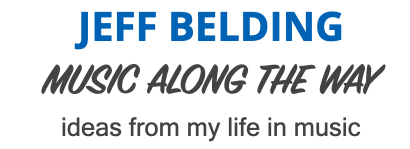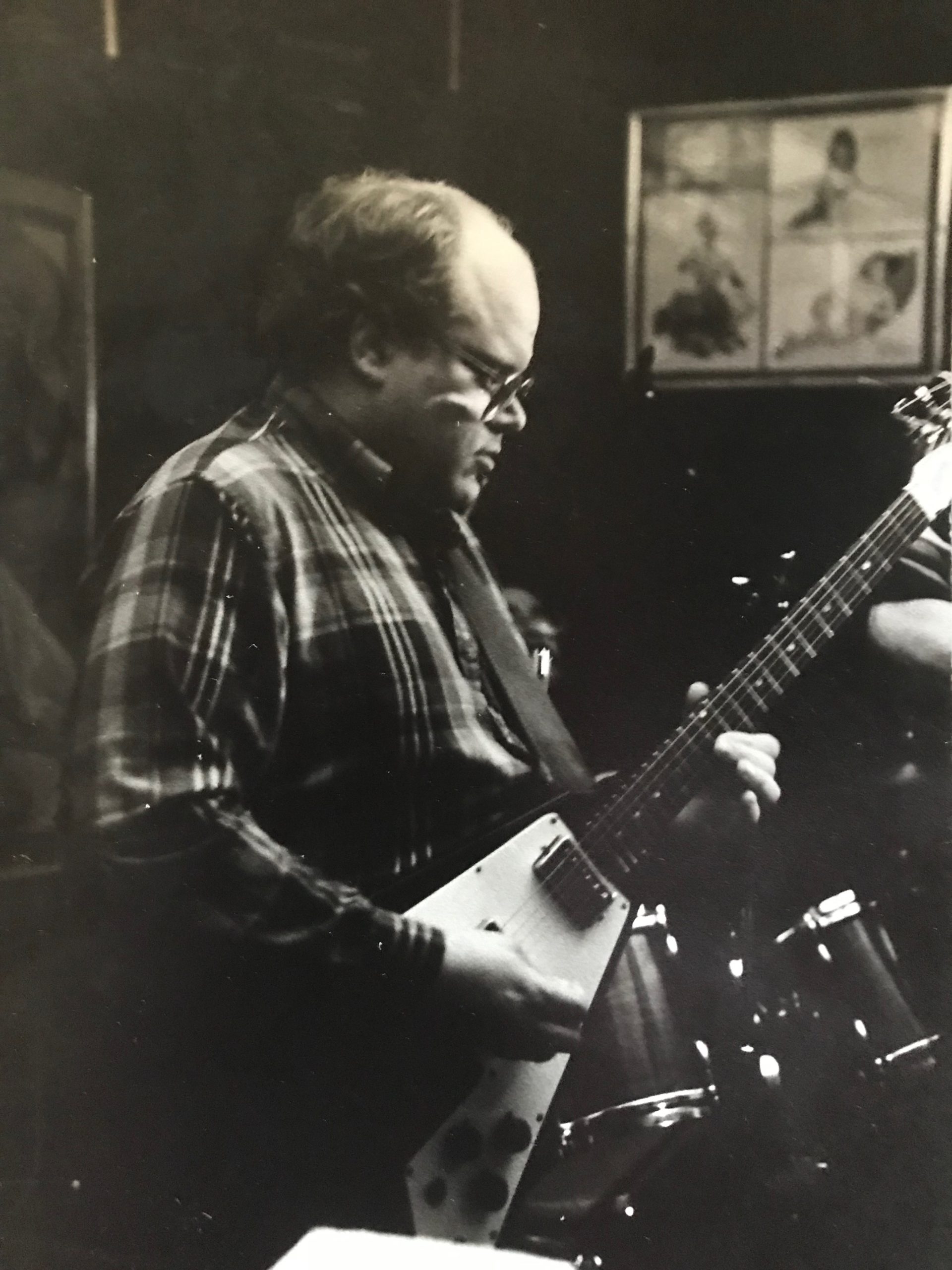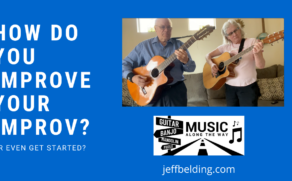Some Additional and Unique Ways to Spend Practice Time

This is my third blog post on “Practice Tips.” I have a few more ideas for you to try as you ponder – hmmmm – what should I practice today??
You can read my other posts on this subject here: January 6, 2019 May 19, 2019. I have also created a summary of all three posts at the end.
Set a Timer and Avoid All Clocks and Watches
Previously I recommended devoting an hour to a practice session. I believe that if you can make that commitment, you will make good progress. I also suggested actually setting a timer – including adding 10 minutes for set up.
Here’s one mental “device” to help get you through your hour. Turn all clocks and watches, as well as timers away from your sight. Perhaps you didn’t feel like practicing at all today. But that timer forces your hand to sit there for an hour and “do something with music!” You will be far less distracted and when that timer does go off, MAN, does it feel great!
The 8X (8 Times) Approach
If you are familiar with my banjo book you may have already experienced what this 8X thing means. But if not here you go –
When learning a new piece of music focus on the sections that are giving you difficulty. Employ the 8X approach playing those difficult sections over and over, at least 8 times (“8X”). Of course, I didn’t invent this method of practicing. It has been recommended in music conservatories since they existed!
Here’s a small story about the 8x approach I call “Chastised For Doing the Right Thing.”
I was once practicing in a cubicle at Boston Conservatory on an upper floor above some classrooms, working out parts on my baritone horn. Rather than invoking just the “8X” principle on a particularly tough measure, I was taking the concept to some extreme like 25X (or more!) Well, some guy came bursting through my door, face all red with anger, and shouted, ”Could you PLEASE play another passage?!? We’re trying to take a test down here!” (“Here” of course meant the room directly below where I was working).
Shucks, I was after all in a MUSIC school. It would have been my right to keep going. But thinking that I might soon be wearing my horn on my head, I packed up and left them in peace. As I was leaving, I was secretly hoping they all got D’s or worse on their lousy test! That’s the only time such an incident has happened to me, so don’t let it worry you too much. Proudly do your 8X work and check the world’s (and your) sanity at the door.
“I Can’t Read Music, and it’s Too Late To Start Now”…REALLY?
Try to get back into (or start) reading music notation. Many of us used to read music when we were kids and then for whatever reason, gave it up. For those of you who have never read music, this might be a good time to try it.
Guitar
For guitarists I highly recommend You’re in the Band by Dave Clo. It comes in both electric and acoustic guitar versions and includes a play-along CD.
What sets this book apart from the rest? Two words: It’s FUN! The CD is really enjoyable to play along with and the book takes a nice gradual approach, string by string. If any method can teach you how to read “real” guitar music, this is the one.
Mandolin and Violin (Fiddle)
Any beginning violin method is just as useful for mandolinists who want to learn how to read music notation. I highly recommend Essential Elements For Strings, Violin, Book One and The Suzuki Violin School, Violin Part, Volume 1. The Suzuki Series is great reading practice for both of these instruments, not to mention guitar as well. Just a warning, this book won’t be of much help to the player who has never read any music.
Banjo
When it comes to banjo, your options of learning how to read actual music notation are next to nothing . For some reason, the transition from tablature to music can prove to be a more difficult one for banjo players. I myself have learned using various beginning guitar methods, figuring out where different notes are found on the banjo neck. Fortunately, it does share the B, G, and D strings of the guitar (when in G tuning). So guitar books are workable (at least as low in pitch as your low D string. You do have to re-think the 1st string in relation to the music staff. Also using the 5th string (High G, top of the staff) where it seems appropriate.
There are no resources specific to banjo notation that I can recommend. I may have to pursue writing about this myself. I will say that reading notation on the banjo has given me new avenues of music to explore. From classical to jazz, these are genres not usually found in banjo tablature books.
I recommend you take on learning to read notation a little at a time. If you can’t get beyond just one or two strings in a month, then so be it. When learning notation, avoid books that give you a double staff of music with the “tablature equivalent” on the bottom. It will only confuse and frustrate you. When reading music notation, that’s all that should be in front of you.
Jeff’s Nutty Practice Loop
Try my “Practice Loop” method. Juggling the practice of six different instruments, (guitar, banjo, bass, mandolin, fiddle and piano) has always been a challenge. If I add harmonica, recorder and drums to the list, I suppose it’s nine instruments that I play or attempt to play. With this many instruments to manage, I had to come to grips with the fact that days would go by where I wouldn’t be able to pay attention to all of them.
Fortunately, as a music teacher, I was at least playing them all everyday in lessons. However, I needed to come up with a system to give equal time and balance to all of the instruments. Then, one day I got this crazy idea.
I took all the guitar music that I had in use (any music from easy to challenging) and made a pile out of it. I took the pile to a relatively safe, empty space and threw it in the air so it would land in a heap. Part of the heap was individual music sheets and some of it included music books (which I hoped wouldn’t get too badly damaged during this process). Then, I rearranged the pile by shuffling the papers and the books like cards to get as random of a sequence as possible.
I proceeded to do this for banjo and the various other instruments that I wanted to keep up with. Each pile represented a different instrument. So, when I started practicing on a pile, at least I could focus on a single instrument for a while. It could end up being a practice session or two on that one particular instrument before switching to another.
The Code of the Practice Loop
My next step was to put all of the piles upright in a tote bag. I marked where I left off using a large piece of cardboard (some really high-tech s – -t, right?). That way, I knew where to start the next time that I sat down to practice. I’ve found this way very effective for me. For one thing you might come across a “strain” of music that’s extremely easy to play. Then, you will ultimately come across something that is a killer to get through. But that doesn’t matter. It’s the next thing in the Practice Loop and you must face it there and then! It’s the “Code of the Practice Loop.” You must face what is next.


Not to worry though, because the next thing after that “terrible thing” may be fun again. That’s one of the joys of the practice loop. Often times you don’t know what’s coming next! When I come to a book within the practice loop, I will go through ten pages. Then mark where I left off with a post-it. That way I will remember to start there the next time I come around through the loop again.
Practice Loop Was A Game-Changer
I can’t begin to tell you how successful the Practice Loop has been for me! It has taken all the guess-work out of “What should I practice today?” Which, as you know, is the very subject of this blog. Just think, without the burden of six instruments, it will be much easier to start your own practice loop.
So now you have some new ideas to help rally you into “The Practice Room.”
I created a summary of the all ideas from my three blog posts on Practice Tips below. Armed with these ideas, hopefully you will find some way to make it easier to “hit the music books.” So go ahead…Hit it!
To sum it up:
How to Improve Your Practice Routine
- If you can devote an hour a day you will make progress! Set a timer but don’t watch the clock.
Less time is ok too if that is all that is available and is better than not practicing at all. Focus is key so thinking about “how much time is left” will only distract you.
- Spend 5-10 minutes learning and practicing scales
When you practice any scale pay attention to the following:
What finger goes with what fret?
How many notes are there per-string?
What are the distances between the fingers of the fretting hand?
Is any “shifting” of the fretting hand required?
Try to at least learn the root or first note of a scale, try picking or bowing the scale in different ways and try playing it in different rhythmic phrasing. - Start with some music you love to play and know well. Then focus on the latest piece that is be-deviling you.
Playing what you’re good at first will give you more incentive to keep going.
When learning a new piece of music focus on the sections that are giving you difficulty. Employ the 8X approach playing that section of that piece over and over, at least 8 times (“8X”). - Work on memorization
First, play through the song while reading it. Then, record yourself playing the tune while reading it from the page. Assuming you played it correctly on the recording, the next step is hide the page, turn on the recording, and try playing along. This helps you “psychologically” to push your memory further, because you know you can play it. It is just a matter of picturing yourself playing it correctly.
- Learn to Read Music Notation
It makes you smarter – your brain will thank you. But do it a little at a time. There are many great books on learning to read music to help you.
- Create a Practice Loop
Randomly combine your music collection and take it on one piece at a time in order during your practice time – come what may!
- Play what you love and play with other musicians
Be sure to finish any practice session on a “good note” (pun intended) playing something you enjoy. Finding others to play with will motivate you to be prepared and improve. It’s fun too.
Next time: Listen in to one of Jeff’s practice sessions – Raw, uncut, and maybe even a little bit scary.



